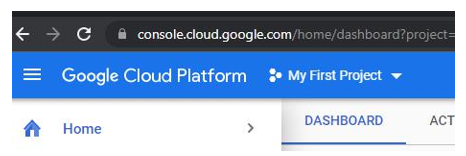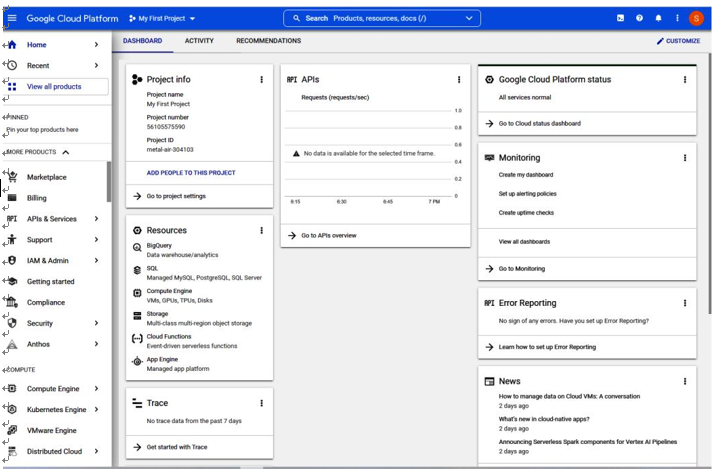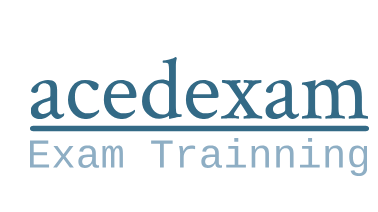Navigating GCP
To enter the GCP management console, we can begin at the following URL: console.cloud.
Depending upon your organization’s IAM integration and customizations, you may have an organization-specific URL to use and additional authentication procedures, but the home page should look something like this:

Figure 1.13 – GCP home page
The GCP home page is made up of various cards, and depending upon your organization’s configuration, your initial entry into the portal may look like what’s seen in Figure 1.14, with a list of cards displaying available resources and status, along with an open panel of pinned and available products and resources that have recently been accessed:

Figure 1.14 – GCP home page dashboard
We’ve covered a lot in this section that will help you with successfully navigating to and within each of the three major cloud provider platforms—AWS, Microsoft Azure, and GCP. For each of these providers, we’ve learned about starting URLs that may be used to sign in, what an initial home page or dashboard may look like, and some of the terminology associated with navigating within each of these providers. Our foundational toolkit is now complete!
Summary
In this chapter, we have reviewed the concept of cloud auditing and the importance of understanding the concept of cloud shared responsibility models and how those may differ across cloud providers, cloud deployment models, and cloud services. We have also looked at general concepts to be aware of related to cloud architecture, deployment, and service models and how this may impact the risk and compliance assessments for an organization. Finally, we reviewed fundamental concepts around the basic structure and navigation within each of the three major cloud platforms covered in this book (AWS, Azure, and GCP).
Knowing these foundational concepts will establish the primary tools you need to begin deeper learning on the best practices of cloud auditing, allowing you to define a list of cloud and IT security controls to be considered, identify IAM controls that are in place, and utilize policy and automation for your audits.
Now that we have reviewed these core concepts of cloud environments, in the next chapter, we’ll begin identifying effective techniques for preparing to audit cloud environments.


